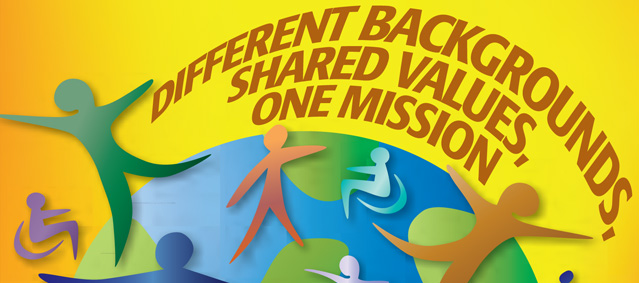Creating a Workplace that Embraces Diversity and Inclusion
The demographics of the workplace are changing and will continue to do so in the coming years. Demographically, many organizations look different than it did a decade ago as the U.S. population is becoming more heterogeneous, with minority groups making up larger portions of the populace.
Diversity can be defined in many ways. One such example is that diversity includes  all the ways in which people differ and is an awareness of and respect for individuals with unique perspectives, backgrounds, and their attributes working towards a common goal. It’s about people.
all the ways in which people differ and is an awareness of and respect for individuals with unique perspectives, backgrounds, and their attributes working towards a common goal. It’s about people.
Inclusion, on the other hand, is about the organization and involves putting the practice of diversity into action by creating an environment of respect, and where everyone is valued and included. Inclusion should be reflected in an organization’s culture, practices, business strategies, mission, and relationships.
One of the most important things leaders can do is create a culture of diversity and inclusion in the workplace for their employees. This is key to building a successful business with today’s workforce.
Workforce diversity can bring about an increase in productivity and competitive advantage. Organizations can offer more solutions to their stakeholders because of new ideas and processes brought into the organizations. Moreover, diversity gives access to a greater talent pool which can improve a company’s reputation and image.
Communicating with a diverse workforce does have its advantages. Research suggests that one of the advantages of communicating with a diverse workforce is the increase in creativity. Employees from different backgrounds can bring in a variety of solutions on how to achieve a common goal. When team members are culturally diverse, more ideas are formed because they may approach a problem totally different.
One disadvantage is the implementation and successful management of diversity programs in the workplace, which can be challenging.
Following are a variety of strategies that employers can implement that can make great strides toward promoting diversity and inclusion in the workplace:
- Diversity training
- Mentoring programs
- Employee resource groups
- Diversity task forces, committees, and advisory boards
- Employee network support groups
Research has shown that nothing drives home the message of inclusion than exposing diverse groups to one another. That is exactly what one company did when they were facing a demographic problem of epic proportions. Here’s their story.
Lockheed Martin, one of the world’s leading global aerospace, defense, and advanced technology companies, needed to replenish a large majority of their engineers who were expected to retire. To create a more diverse and inclusive workforce, Lockheed Martin’s MS2 employee communications and design team developed an “Embrace Diversity” print postcard campaign that helped employees understand the beliefs and backgrounds of all the workers who comprised the organization. The team created innovative, vibrant, eye-catching postcards as a communications tool to get employees to think about their own reactions and beliefs. This campaign involved a series of different postcards that explored topics such as generational differences, cultural and religious traditions, teamwork, as well as company loyalty. The communications team designed the postcards with the diversity messages to spark discussion among employees.
In conclusion, diversity and inclusion are relevant to successful business strategies that increase quality performance and better productivity.

Leave a Reply